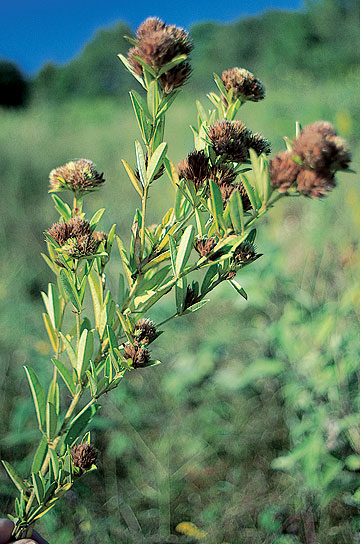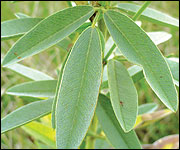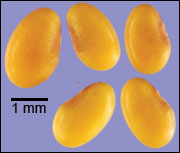Roundhead lespedeza
- Lespedeza capitata
- Roundheaded bush clover
Forb

 Roundhead lespedeza can grow more than 3 feet tall.
Roundhead lespedeza can grow more than 3 feet tall.
Robert N. Chapman, Missouri Department of Conservation
Seeds are retained well into winter, making them available over a long period of time. Conspicuous reddish-brown seed heads and an upright growth structure are good identifiers of roundhead lespedeza.
Tim Smith, Missouri Department of Conservation
Description
As the name would imply, this perennial species is easily identified in the fall and winter by the presence of reddish-brown, rounded seed heads. Leaflets are elongated and occur in sets of three; they are among the largest of the lespedezas, and may be 2 inches long by 1/2 inch wide. In summer, the underside of the leaf is silvery. Mature plants commonly attain a height of 3 feet and may grow as tall as 6 feet.
Bloom period
July to October
Use by bobwhites
As with most lespedezas, bobwhites relish the seeds of this plant. Roundhead lespedeza holds its seeds well into the winter, providing a food source over a longer period than many other legumes. However, this legume grows in dense grass, making its seeds relatively difficult for bobwhites to reach on the stalk or find in the dense thatch. Seeds may be more available after burning removes grass cover, but unburned overhead cover should not be too far away. This is a great plant for diversifying grasslands and makes good brood cover.



